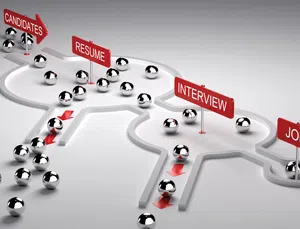Meetings, meetings and more meetings. The last 10 years of my career I spent more than half of my day in a meeting. Why have so many? Do they really help? Are they effective? Is anything accomplished?
Meetings vary according to your business and position. As General Manager of GE Aviation’s Supply Chain, I was always part of design reviews, production issues, investment decisions, procurement activates, HR initiatives and finance reviews. My time was valuable and important I needed to manage it effectively.
I believe meetings can be simplified into three groups: Crisis, Strategic and Tactical.
The Crisis meeting is self-explanatory. It is critical that your organization prepares for these types of events in advance, because you don’t know when events can occur.
We had an explosion at our plant one day around 5 p.m. I was the crisis manager leader at this 5,000-person, 1-million sq. ft. of manufacturing floor space, R&D labs, corporate offices, etc. Within five minutes I summoned the crisis management team, and we were already checking to make sure everyone was safe and accounted for in that area.
We prepared internal and external communications. Pictures of the event were already on the Internet and being shown on the local evening news. We allowed the local police; fire and safety folks do their job, while we managed the rest.
It’s important to be proactive, you must practice, run drills and perform simulations to prepare for these types of emergencies
Strategic meetings are more open. You want to stimulate discussion and ideas. It’s important to provide an atmosphere that supports sharing. All ideas are welcome and need to run their course during the meetings. Often times strategic meetings come in a series, it takes a few meetings to get a solid plan.
Tactical meetings are the most frequent and used constantly. Sharing of data, reviewing results, scheduling the day’s events, procurement status, logistics particulars. All of these constitute a meeting. They need to be efficient, driven by facts, action oriented and support communications back to the business and people.
Five traits that worked for me in my career were:
1. Timeliness
2. Purpose
3. Operating Rhythm
4. Participation
5. Action items
Timeliness: Start meetings on time and end on time. Always have an agenda prepared and use it to bring everyone back on track. As the boss if you demand something it will happen. If a meeting goes too long you will lose your audience.
Try stand-up meetings, taking out the chairs it will help shorten the meeting and its better for your health. Keep the meeting moving.
Purpose: Every meeting must have a purpose, make sure it is defined even if it is a strategic meeting. Get the right players there and measure the right things.
In 1998 I was the GM of production, responsible for shipping all engines to Boeing, Airbus and our other airframers. We had a JV partner in France (Safran-Snecma); collectively we jointly produced all the engines. We were enjoying a major surge in orders during this time and we were significantly behind schedule.
We had daily meetings with each other trying to fix our delivery problems. The meetings were a disaster, everyone was talking from their own sheets we were 4500 miles away from each other and nothing was improving. We lacked a shared purpose and more importantly a common metric. We both wanted the same thing to meet Purchase Order delivery dates. We needed to get focused in a hurry.
Collectively both teams prepared a new one-page summary of our shared goals. It was simple and it took the emotion out of the meeting too. We focused on this page, used its daily results and acted accordingly. Within 3 months we were back on plan.
Operating Rhythm: You must establish an operating or execution process. Get focused, get moving and make something happen. Make sure everyone is ready and prepared. I remember in the 1990’s Jack Welch our CEO went to visit Sam Walton in Bentonville, Ark.
At the time Wal-Mart held a weekly meeting with their regional leaders. These leaders were in the field all week, on Friday they would share their information. They called the meeting QMI (Quick Market Intelligence) in a short disciplined meeting Wal-Mart was able to make tactical changes for their stores overnight.
The Internet was still in the early stages; they were able to react to the market/customer immediately. We at GE adopted this process the next week. Its core success was a strong operating rhythm.
Participation: Great meetings engage everyone. It’s important to allow everyone to be heard while adding value. I would use two techniques to encourage participation. Sometimes I would come to the meeting and sit in the middle of the conference table or take a different seat.
Trying to show people I am just one of the team members. As a good steward of the meeting I would call on people. I would ask for their opinion or have them provide information.
Action Items: Preparing an action item list brings the meeting full circle. An action item list that assigns people and timing is critical for a great meeting.
Start the process with someone summarizing the results of the meeting. This will give everyone another opportunity to review the facts and it will drive you to establish a “to do” list. You must assign folks and establish completion dates. Hold the folks accountable.
Meetings are here to stay. Today, a meeting can be conducted using many different digital techniques. Welcome the tools and use them but remember in the end you must connect with the people and your team. The tips I presented above still count. Use them.






